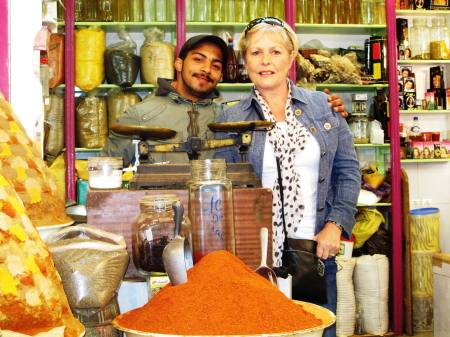“We sighted Ronda. It was raised up in the mountains, like a natural extension of the landscape, and in the sunlight it seemed to me to be the most beautiful city in the world.” – José Agustín Goytisolo
Ronda is one of the pueblos blancos (white towns) so-called because it is whitewashed in the old Moorish tradition and sits like a wedding cake on the surrounding ragged countryside. It also happens to be one of the most spectacularly located towns in Andalucía sitting on a massive rocky outcrop straddling a precipitous limestone cleft in the mountains.
Ronda is most famous for a one hundred and thirty metre high bridge, the Puente Nuevo, whose name means ‘new bridge’ and which spans a dramatic gorge that divides the city in two.
To put that into some sort of perspective it is the height of thirty London double-decker buses, seven times higher than the Presidents’ faces at Mount Rushmoor, four times higher than the Aqueduct of Segovia, two and half times higher than Niagara Falls and more or less the same height as the Sydney Harbour Bridge.
The bridge was begun in 1751 and took forty-two years to complete. It is supposedly one of the most photographed structures in Spain and often quoted as one of the top places to see in Europe and lots of people must have taken that recommendation literally because this afternoon the town was swarming with day-trippers from Seville and the Costa del Sol.
We crossed the bridge and looked out over the sprawling patchwork landscape of burnt brown, cream, beige and copper coloured fields that spilled out across the flat valley plain punctuated with terraces of irrigated green, a meandering river far below, swollen by recent rain and a dramatic grey sky full of heavy cloud and pregnant stormy menace.
The author Ernest Hemingway and actor and film director Orson Welles both lived in Ronda at some point in their lives (it seems that they lived almost everywhere) and both wrote warmly about the place. Hemingway’s novel ‘For Whom the Bell Tolls’ describes the murder of five hundred fascist Nationalist sympathisers early in the Spanish Civil War by being thrown from the cliffs of El Tajo and into the Rio Guadalquivir by the Republican forces.
Or possibly vice versa, I have never read the book so am not absolutely sure and neither are the historical accounts because even after seventy-five years both sides continue to accuse each other of the grisly crime but those who lost their lives are in some small way poetically remembered by Orson Welles who said – “A man does not belong to the place where he was born, but where he chooses to die”
We walked over the bridge and admired the expansive views over the surrounding countryside and from here it was easy to understand why Ronda was one of the last Moorish strongholds in Spain, only finally falling to the Christian armies in 1485 just seven years before the fall of Granada.
It was possible to visit the interior of the bridge by climbing down a set of steps carved into the side of the canyon and then entering a chamber where there was an interesting exhibition in what was once the guard-house describing the history of the bridge and its construction. Just behind the guard-house was the cramped prison, which allegedly both sides used for imprisonment and unimaginable torture during the civil war.
Ronda, it turns out, has three bridges, the first and lowest may have been Roman but was certainly Moorish and the second was built in the middle ages. They are both at the bottom of the canyon and as both the old town and the new town were at the top this meant a lot of aching legs and creaking wagon wheels to get between the two so the third and most famous bridge was built right at the top to make life a whole lot easier for everyone.
In the evening we went into the town looking for somewhere to eat. It was much quieter now that the tourist buses had left and there was plenty of choice. After a larger than planned lunch neither of us were especially hungry so we were easily talked into a tapas bar with a promise of a mixed plate of local specialities.
According to legend, the tapas tradition began when the King of Castile, Alfonso the Wise (if I was King I think I would like to be called ‘the Wise’) visited a tavern in the town of Ventorillo del Chato in the province of Cádiz, and ordered a glass of sherry. There was a gusty wind, so the innkeeper served him his glass of sherry covered by a slice of ham to prevent the sherry from getting dirty. The King liked it, and when he asked for a second glass, he requested another tapa or ‘cover’ just like the first.
This developed into the practice of using slices of bread or meat as a practical measure meant to prevent fruit flies from hovering over the drink. The meat used to cover the sherry was normally ham or chorizo, which are both very salty and activate thirst and because of this, bartenders and restaurant owners began creating a variety of snacks to serve with sherry, thus increasing their alcohol sales.
It wasn’t the best tapas that we have tasted but to be fair it was traditional and authentic and we liked that and when we had finished we left and returned to the Hotel Poeta de Ronda and hoped that tomorrow the rain would stay away.











